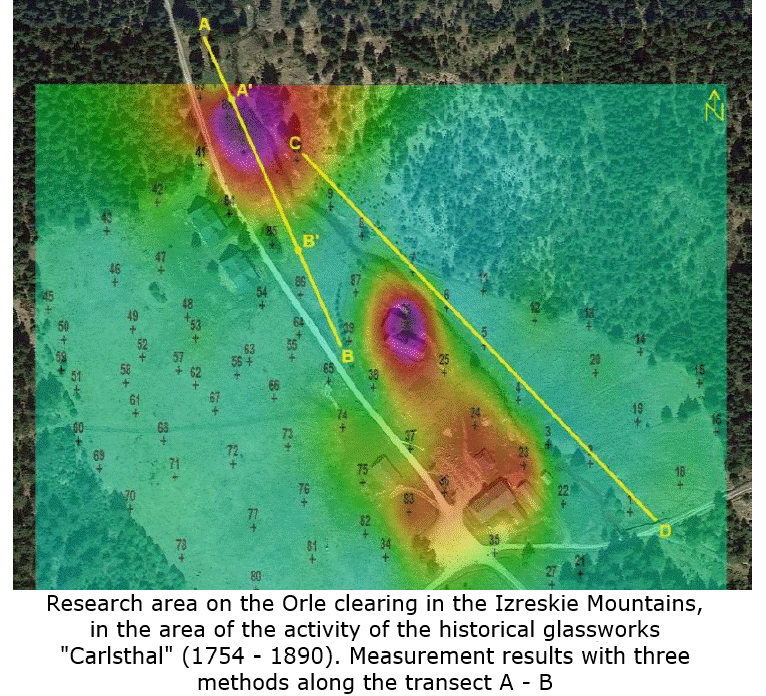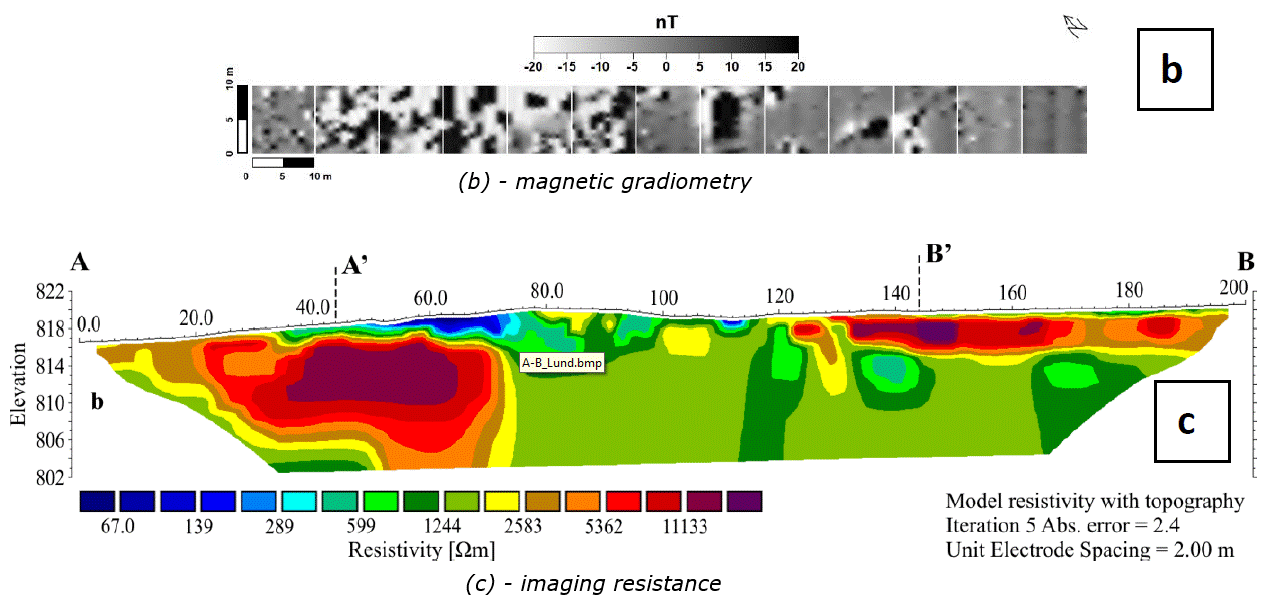The aim of the project was to use the results of five different geophysical methods (ground magnetometry, magnetic gradiometry, conductometry, electrofusion measurements and excited potential measurements) to precisely determine the extent of anthropogenic layers lying beneath the surface of the terrain. The research was carried out in several exemplary areas where mining and metallurgical activities were documented in different historical periods. The second objective of the research was to use chemical methods to determine whether the accumulation of large quantities of potentially toxic metals in the anthropogenic layer could pose a real ecological threat to the surrounding water and soil environment. The first part of the investigation was based on soil magnetometric measurements, which determined the differences in magnetic susceptibility between anthropogenic and natural soil layers. In the areas where magnetic anomalies were detected, conductometric measurements of electrofusion and excited potentials were performed. Using the integrated data from these methods, the area of anthropogenic layers lying in the soil substrate or the impact area of the aboveground industrial waste dumps was precisely determined. Soil samples were taken from the anthropogenic layers and subjected to chemical-mineralogical analysis, based on which the type and chemical-mineralogical composition of the analysed soil layer or waste were precisely determined. In the next step, samples were taken from the adjacent soil and water layers (superficial or subcutaneous) that are in direct contact with the layer or waste site under study to determine whether the toxic elements contained in the anthropogenic layer are subject to activation and migration into the environment and whether they may pose a real hazard. The research made it possible to review the state of knowledge on the possibility of integrating five different geophysical methods to determine more precisely the spatial extent of anthropogenic layers and/or layers containing artefacts, and allowed a better characterisation of the magnetic and geoelectric properties of the anthropogenic materials present in these layers. The feasibility of the ecological threat in the studied areas was also assessed.








